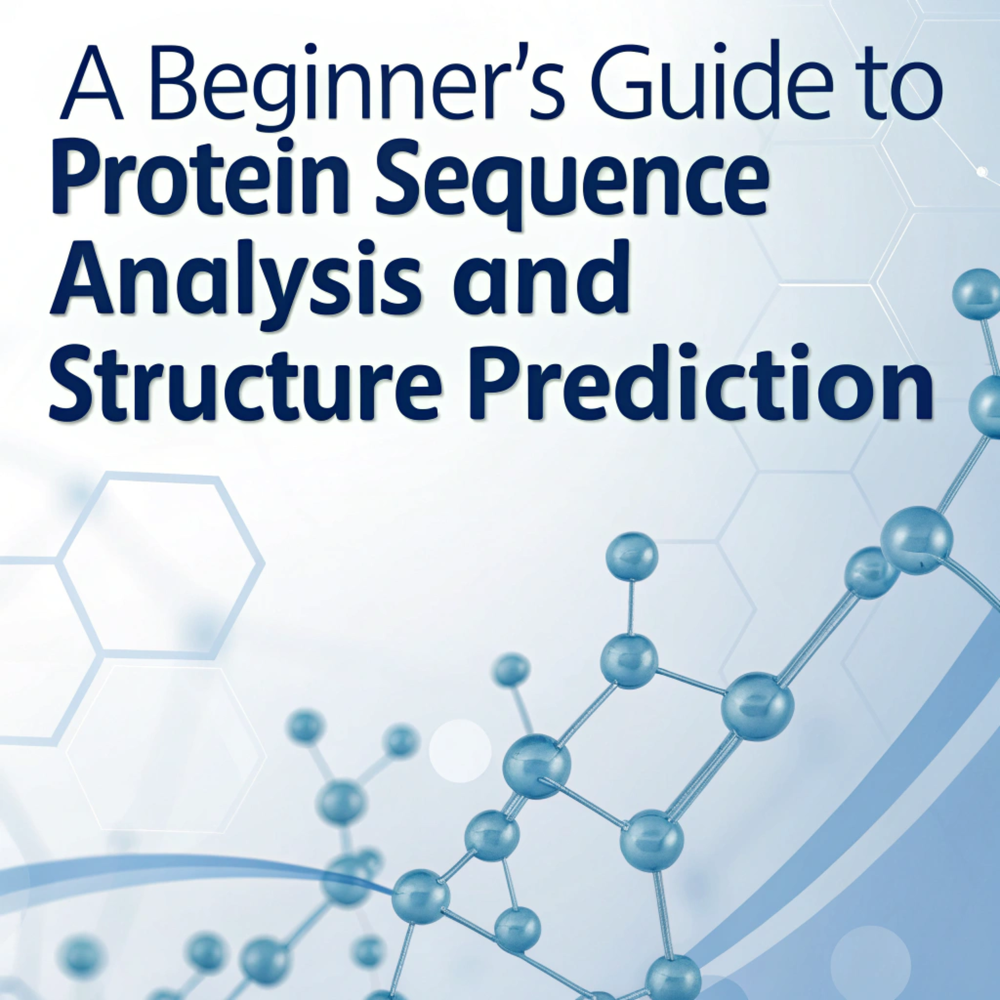A Beginner's Guide to Protein Sequence Analysis and Structure Prediction
Introduction
In modern biological research, whether you're studying protein functions, signaling pathways, disease targets and mechanisms, or screening for novel drug target proteins and their binding sites, there's a fundamental need to analyze protein sequences and predict protein structures. This is because both the amino acid sequence of the polypeptide chain and the higher-order structure of the protein significantly influence its ultimate function.
An essential insight for researchers is that "dry lab" work is equally important as "wet lab" experiments. Relying solely on collecting raw data and processing it with basic office tools may leave you without clear direction. Similarly, starting experiments without understanding your target molecule can lead to inefficiency and wasted resources. This is where bioinformatics methods become invaluable.
Bioinformatics has matured significantly in recent years, developing numerous data analysis methods and theoretical models that drive protein research forward. This guide aims to introduce beginners to the fundamental tools and resources for analyzing protein sequences and predicting protein structures.
Essential Databases
1. NCBI (National Center for Biotechnology Information)
Website: https://www.ncbi.nlm.nih.gov/
NCBI stands as the most comprehensive molecular biology database, featuring various specialized databases that cover every aspect of the genetic central dogma. For protein research, key resources include:
- GenBank (nucleic acid sequences)
- Protein database (protein sequences)
Key Feature: You can download sequences in FASTA format, which serves as the foundation for many analytical operations. FASTA format consists of a single-line header followed by the sequence data, making it ideal for sequence alignment and analysis.
2. PDB (Protein Data Bank)
Website: https://www.rcsb.org/
PDB specializes in three-dimensional structural data of biomolecules, including:
- Proteins
- Nucleic acids
- Carbohydrates
Each protein's dedicated page provides:
- Primary structure
- Three-dimensional structure
- Atomic coordinates
- Related research literature
- Experimental data (including NMR results when available)
3. UniProt
Website: https://www.uniprot.org/
UniProt serves as the most comprehensive integrated database for protein information, offering:
- Detailed sequence data
- Functional annotations
- Protein classification
- Subcellular localization
- Post-translational modifications
- Protein interaction data
Analysis Tools
1. EMBOSS (European Molecular Biology Open Software Suite)
Website: http://emboss.open-bio.org/
EMBOSS provides open-source tools for molecular biology analysis, including:
- Sequence alignment search
- Reverse translation
- Codon usage comparison
- Statistical analysis
- Sequence extraction
Beginner-Friendly Tools:
- water (local sequence alignment)
- needle (global sequence alignment)
2. BLAST (Basic Local Alignment Search Tool)
Website: https://blast.ncbi.nlm.nih.gov/Blast.cgi
BLAST enables comparison of protein or nucleic acid sequences using local alignment methods. It helps researchers:
- Discover sequence similarities
- Identify homologies
- Analyze sequence differences
- Find evolutionarily related sequences
3. SWISS-MODEL
Website: https://swissmodel.expasy.org/
SWISS-MODEL offers automated protein structure homology modeling:
- Input: Protein sequence (FASTA format)
- Process: Automatic template search and sequence-structure alignment
- Output: Predicted three-dimensional structure
- Particularly valuable when PDB structures are unavailable
Practical Tips
- Start with sequence acquisition from primary databases (NCBI, UniProt)
- Use BLAST or EMBOSS tools for initial sequence analysis
- Proceed to structure prediction with SWISS-MODEL if needed
- Always cross-reference findings across multiple databases
- Consider using specialized databases for specific research needs (kinases, phosphorylation, etc.)
Conclusion
In today's era of high-throughput technologies, mastering bioinformatics tools and databases is crucial for efficient research. While this guide presents fundamental tools rather than cutting-edge options, it provides a solid foundation for beginners entering the field of protein analysis and structure prediction.
Remember: The combination of computational analysis and experimental validation leads to more robust research outcomes. Start with these basic tools, and as you gain confidence, explore more specialized resources based on your specific research needs.

